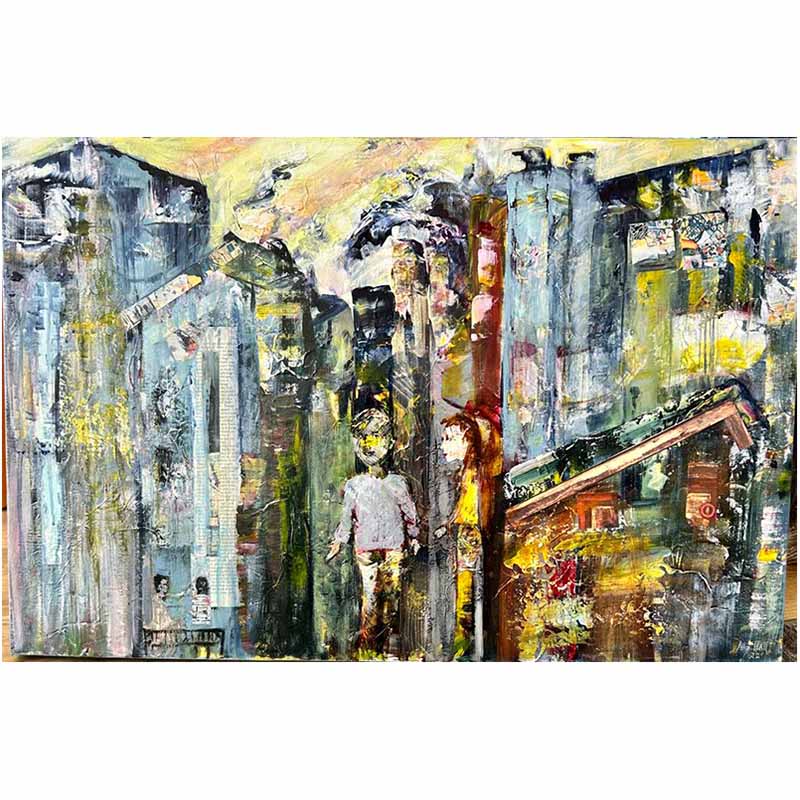Here we explore the world of acrylic painting and its unique properties. We’ll delve into different techniques and styles, as well as the history of this fascinating medium. Join us as we explore the possibilities of acrylic painting, and create unforgettable works of art!
2. Benefits of Acrylic Paint
Acrylic painting is a popular medium among artists due to its versatility, quick drying time, and ability to create a wide range of textures and effects. Acrylic paints are made from a mixture of pigments and a synthetic polymer binder, which allows them to adhere to a variety of surfaces, including canvas, paper, and wood. Unlike oil paints, which require solvents for cleaning and thinning, acrylic paints can be easily cleaned up with water. This makes them a more eco-friendly option for artists. Acrylic painting is also known for its bright and bold colours, which can be mixed and layered to create depth and dimension in a painting.
Another advantage of acrylic paint is its durability. Once dry, it is resistant to water and fading, making it a great choice for outdoor art projects.
3. Different Techniques with Acrylics
Acrylic painting is a versatile medium that offers many possibilities when it comes to techniques. One popular technique is layering, which involves building up layers of paint to create depth and texture. Another technique is blending, which involves mixing colors on the canvas to create a smooth transition between shades. Artists also experiment with different tools, such as brushes, palette knives, or sponges, to create unique effects. One of the most exciting things about acrylics is their ability to be used with other media, such as watercolor or pastels. This opens up a whole new world of possibilities for mixed media projects. With acrylics, the possibilities are endless.
4. Acrylic Paintings Versus Oil Painting: Which One is More Complex to Create?
When it comes to painting, artists have a plethora of mediums to choose from. However, two of the most popular mediums are acrylic and oil paints. Both have their own unique properties and advantages, but which one is more complex to create?
Acrylic paintings are known for their vibrant colors and quick drying time. They are water-based, which means they can be thinned with water or medium to create different effects. Acrylics also have a matte finish, which can be desirable for some artists.
On the other hand, oil paintings are known for their rich colors and slow drying time. They are made with oil as the binder and require solvents like turpentine or mineral spirits for thinning and cleaning brushes. Oil paints also have a glossy finish that can enhance the depth of the painting.
In terms of complexity, both acrylic and oil paintings require skill and technique to create a successful piece of art. However, some may argue that oil painting is more complex due to its slow drying time and the need for solvents.
Oil painters must be patient as they wait for layers to dry before adding more paint or details. This can take days or even weeks depending on the thickness of the paint. Additionally, using solvents requires careful handling as they can be toxic if not used properly.
Acrylic painters have an advantage in terms of speed as their paintings dry quickly allowing them to work faster than oil painters. However, they must work quickly as once acrylics dry they cannot be reactivated like oils.
Another factor that adds complexity to both mediums is tonality. Tonality refers to the range of values between light and dark in a painting. It is an important aspect in creating depth and dimension in a piece of art.
Tonality is persuasive in both acrylic and oil paintings but achieving it can be more challenging in oils due to their slow drying time. Oils allow for more blending and layering which can create a smoother tonality but requires patience and skill.
In conclusion, both acrylic and oil paintings have their own unique properties and advantages. While some may argue that oil painting is more complex, it ultimately comes down to the artist’s personal preference and skill level.
5. Conclusion
In conclusion, acrylic painting offers a world of possibilities for artists to explore and express their creativity. From vibrant landscapes to abstract designs, the versatility of acrylics allows for endless experimentation and innovation.


